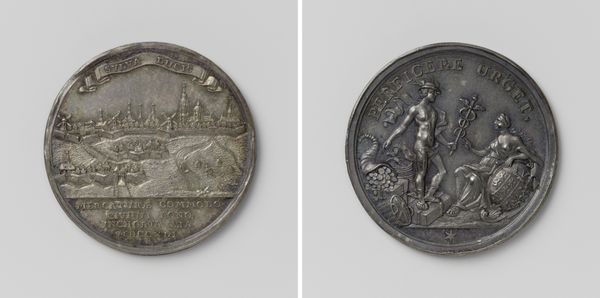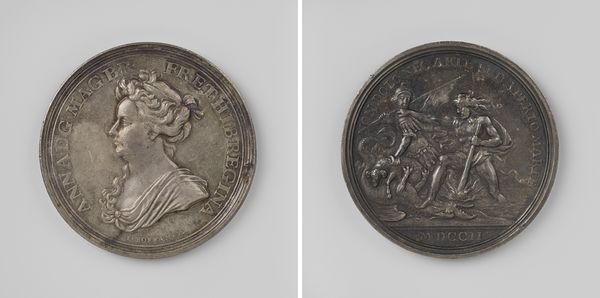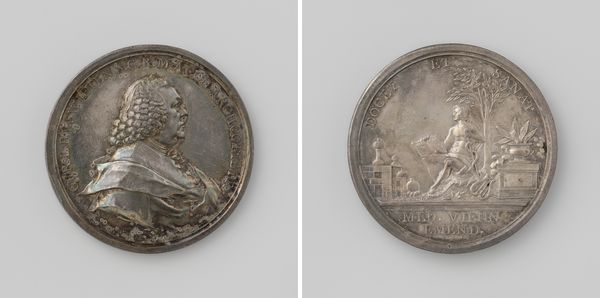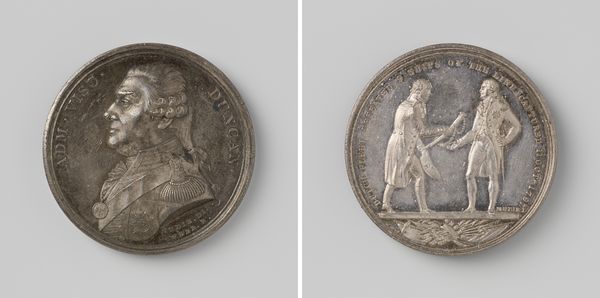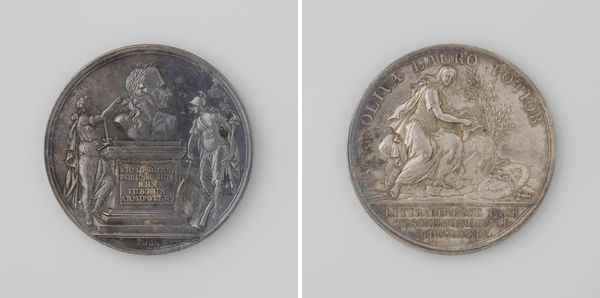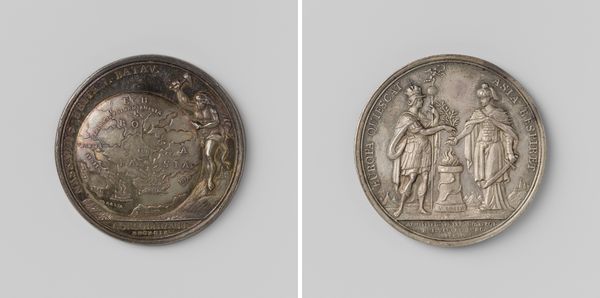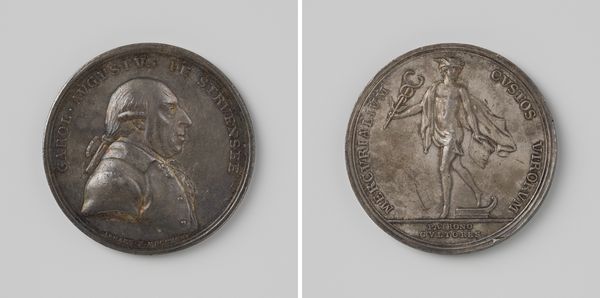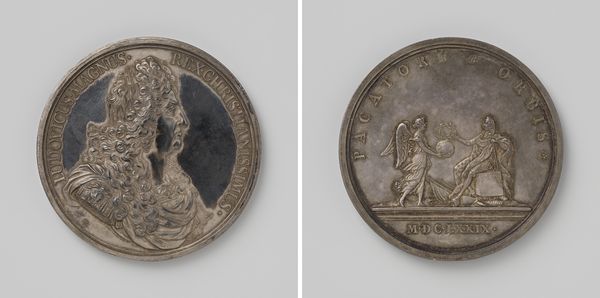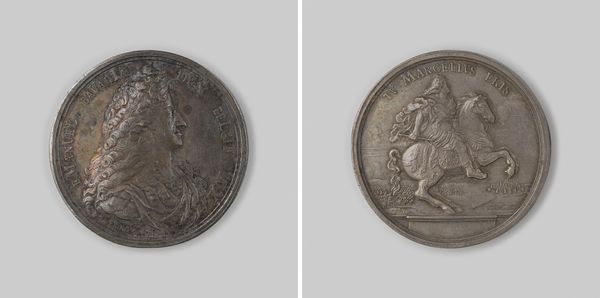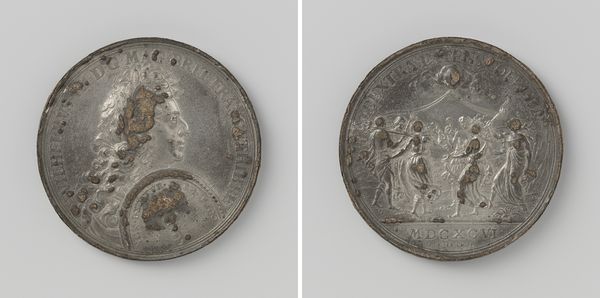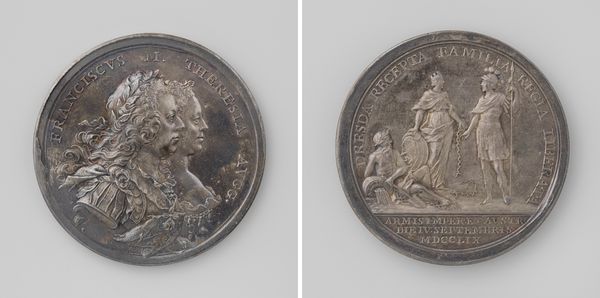
Vrede van Utrecht, penning vereerd aan de leden van beide Houses of Parliament 1713
0:00
0:00
metal, relief, sculpture, engraving
#
portrait
#
baroque
#
metal
#
sculpture
#
relief
#
sculpture
#
history-painting
#
engraving
Dimensions: diameter 3.5 cm, weight 15.41 gr
Copyright: Rijks Museum: Open Domain
Editor: This is a medal from 1713 by John Croker, celebrating the Peace of Utrecht. It looks like it's made of some kind of metal, with raised designs on both sides. One side shows a portrait, the other a standing figure. What strikes me is how official and celebratory it feels. What do you see in it? Curator: The "Vrede van Utrecht" medal exemplifies how art served as propaganda in the early 18th century. Commissioned to commemorate a pivotal treaty, its creation and distribution were undeniably acts of political theater. Consider, for instance, that such medals were often bestowed upon members of Parliament, essentially functioning as both accolades and reminders of allegiance. Who do you think the portrait depicts? Editor: Based on the inscription, it seems to be Queen Anne of Great Britain. And the figure on the other side is perhaps an allegorical representation of peace? Curator: Precisely! And note how this representation isn't neutral. The imagery serves a distinct narrative: Britannia, strong and victorious, bringing about peace. It is significant to reflect on how history is crafted not just through written accounts, but through objects that were circulated and valued, molding public perception. Medals like these help solidify power. Were these types of images considered trustworthy? Editor: I imagine people would have understood that this kind of image presents a certain point of view, even back then. It’s fascinating how objects like this participated in constructing a shared understanding of historical events, or at least tried to. I hadn't really considered art's role in solidifying narratives like that before. Curator: Exactly. Examining art from this lens provides invaluable insights into power dynamics of past societies. Reflecting upon who commissioned it, who it was created by, and its intended audience is of vital importance when looking at art that carries significant historical importance.
Comments
No comments
Be the first to comment and join the conversation on the ultimate creative platform.

